

Tao Te Ching
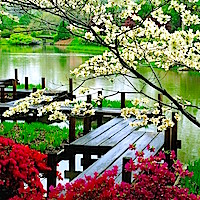
Japanese Lineage
Like the Japanese islands being a small, refined, and concentrated version of the Asian continent; much of Japanese culture seems like a refinement, a distillation, a concentration of Chinese culture, invention, and tradition. A blessing from this rarefaction can become a heightened aesthetic and appreciation while a disservice can cause a sinking into rigidity and harshness. Both become apparent in the lives of our Japanese lineage holders.
People (16)
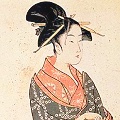
Empress Suiko 推古天皇 (Suiko-tennō)
554 – 628 CE
Emperor’s daughter, Buddhist nun, first and only confirmed Japanese Empress Regnant of Japan; Suiko’s many achievements include adopting a more useful calendar cycle, the 17-article constitution (written by Shotoku), and the official recognition of Buddhism by the issuance of the Flourishing Three Treasures Edict in 594. She was one of the first Buddhist monarchs in Japan, sponsored Buddhist temples and monasteries, and firmly established Buddhism in Japan. She orchestrated China’s first diplomatic recognition of Japan and close cultural contact with both China and Korea.

Prince Shotoku
574 – 622 CE
The son of emperor Yomei, Shotoku inspired a devotional tradition of protecting Japan, the Imperial Family, and Buddhism. His commentary on three famous Buddhist sutras in 615 CE are considered the first Japanese text. He also wrote the first Japanese constitution and is credited with creating a strong and united Japan. Still revered, his picture is on the Japanese 10,000 yen currency note.

Dōgen Zenji 道元禅師
1200 – 1253 CE
Illegitimate son of a Japanese noble, Dōgen became a famous poet, writer, philosopher, and founder of the Sōtō school of Zen. Dissatisfied with the spiritual materialism of Buddhist teaching and teachers in Japan, he traveled to China seeking a more authentic Way. After training there for many years he returned, taught a meditation practice called zazen, and wrote the first Japanese monastic code. His deep understanding and powerful use of language helped bring realization to many and continues today.
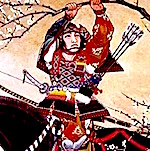
Hojo Tokimune 北条 時宗
1251 – 1284 CE
Hojo Tokimune, Hōjō 北条 時宗 (1251 – 1284)
Mainly responsible for the spread of Zen Buddhism in Japan and ruler during the time Kublai Khan was invading and trying to conquer; Hojo Tokimune as the 8th Shogun and with the help of typhoons repelled two Mongol invasions. (The second included 4,400 ships and over 140,000 troops.) He personally planned and led the defense and in the process established a new warrior class called samurai which became one of the most fierce fighting forces the world has ever known. He brought famous teachers from China, built temples, and funded the transplanting and translation of Chinese Chan Buddhism into Japanese Zen. Although dying when only 33 years old, his influence on Japanese politics and culture ran deep and still continues.
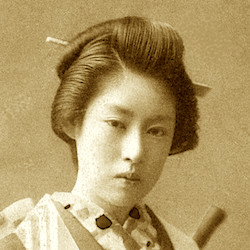
Kakusan Shido
1252 – 1305 CE
Kakusan Shido, Horiuchi (1252 - 1305)
During a time when men could easily divorce their wives but it was almost impossible for women and knowing personally how often women were used as pawns in male wars and revenge killings, Shido established Tokeiji 松岡山東慶寺 - a Rinzai Zen convent and the first used to shelter women.
Shido’s husband was the ruler known for repelling Kublai Khan’s Mongol invasion, spreading Zen Buddhism, and establishing the Samurai tradition. When he died, her dealing with the political intrigue led to this inspiration and the refuge called the “Divorce Temple.” It operated for over 600 years, sheltered runaway wives, gave them counseling and legal help. After helping two daughters of emperors, an emperor gave this extraterritorial rights. This empowered it to officially help divorcées and greatly increased its ability to help women in need.
During just the Tokugawa period, 2,000 women were sheltered and Zen luminaries like Reginald Horace Blyth, and D.T. Suzuki are buried there.
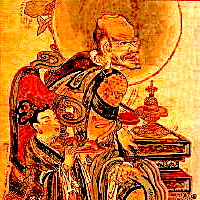
Yoshida Kenkō 兼好
1284 – 1350 CE
Inspiration of self-reinvention
After a life working as an officer of the guards in the Imperial palace, Kenko became a monk and one of the most famous authors of his era. His speculations on universal themes like beauty, nature, impermanence, and friendship found a deep resonance of feeling during his own time, one that continued fresh through the time since, and one remains part of Japanese school curriculum today. A paragon demonstrating the ever-present possibilities of re-inventing ourselves, Kenko’s transformation from a menial worker into an insightful sage became an inspiration in itself, beyond the wisdom in his essays and poems themselves.

Bassui Tokushō 抜隊 得勝
1327 – 1387 CE
Meditation master without distraction
A student of Sōtō and Rinzai as well as Ch'an schools, Bassui criticized the state of practice and realization during his time. He thought most teachers and students either tilted either too far toward understanding only the words or too far toward only trying to understand the sense; either too much emphasis on dogma and form or too much on freedom and spontaneity. Personally, he refused to wear robes or engage in the traditional rituals and focused on meditation practice itself. He preferred solitude and lonely hermitages; but, because of his clear realization, large numbers of students continually followed and sought him out.
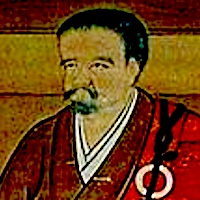
Bankei Yōtaku 盤珪永琢
1622 – 1693 CE
Zen Master of the unborn
Along with Dogen and Hakuin, one of the most influential Zen masters, Bankei developed a description of realization he called "Unborn Zen." D. T. Suzuki thought this one one of the most important and original descriptions in all the history of Zen. A rebellious child always getting into trouble, his early studies with Confucian and Buddhist scholars led to frustration for both Bankei and his teachers, to him getting expelled from his family home and having to live in a neighbor's tiny hut. He practiced so long and so hard that his health deteriorated to an extent causing his doctor to predict an imminent death. Healed by his realization however, he lived another 48 years. Refusing a high status position in his monastery, he worked in the kitchen and later lived alone in the mountains.
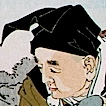
Matsuo Bashō 松尾 芭蕉
1644 – 1694 CE
The most famous poet of the Edo period in Japan and still internationally renowned and recognized as the greatest master of haiku, Bashō left his samurai status, urban fame and fortune to wander throughout Japan writing poetry. During periods of history in Japan, criticizing his poetry was considered blasphemous and many of his poems are reproduced on monuments. Some scholars believe he invented haiku and his verse greatly influenced Ezra Pound, the Imagists, and Beat Generation poets.

Hakuin Ekaku 白隠 慧鶴
1686 – 1769 CE
A monk at just 15, Hakuin soon became dissatisfied with the teachings available, left the monastery, began wandering and met a Taoist hermit, Hakuyu. One of the most influential figures in the Zen tradition, Hakuin included teachings from many different traditions and brought these to the illiterate. Although not beginning to paint until almost 60, he’s now recognized as one of the greatest Zen painters with works displayed in some of the world's leading museums. In a famous story, when unjustly accused of fathering a child and also when the mother later confessed to the lie and the child was taken away from him, his only comment was “Is that so?”

Ryokan 良寛大愚 (Ryōkan Taigu,“The Great Fool”)
1758 – 1758 CE
One of the most popular personalities in all of Japanese history, neither priest or lay person, “unthinkably kind” but strict practitioner, saturated with enlightenment yet calling himself “The Great Fool;” Ryōkan was a scholar, calligrapher, and poet yet spent his time with ordinary people. He took no disciples, gave no sermons, took no positions, and spent his time begging, playing with village children, writing and speaking some of the East’s best poems that bridge the gap between understanding the words and understanding the sense. Non-sectarian, a critic of institutional power and professionalism, and startlingly honest, today Ryōkan is a true Japanese national hero familiar to almost every child and respected by young and old, rich and poor, powerful and humble.
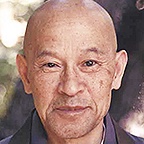
Shunryu Suzuki Roshi
1904 – 1971 CE
In completely in harmony with Lao Tzu, Suzuki Roshi’s teachings, possibly more than almost anyone else – and without saying so – brought a clear understanding of the Tao Te Ching into our modern world. In Japan, he had to deal with the rigidity and aggressiveness of his war time country. He came to San Francisco in 1959 and flourished during the height of the counter-culture influencing poets, artists, religious leaders (like Alan Watts and Chogyam Trungpa), and founded the first Zen Buddhist monastery in the West.
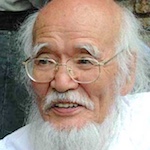
Masanobu Fukuoka 福岡 正信
1913 – 2008 CE
Farmer and philosopher, giant in the development of organic farming, sustainable development, guerrilla gardening and permaculture; Fukuoka founded “No-Till Natural Farming.” Trained as a microbiologist and agricultural scientist, he challenged Western agricultural practices both on his farms, in worldwide lectures, and in his books applying Taoist approaches like non-intervention and “Do-Nothing farming.” He worked with the UN to combat desertification, helped the Green Gulch Zen Center and Lundberg Family Farms, did projects in Africa, India, the Far East, Europe and South America. A deep observer of nature, he went beyond farming techniques to inspiring the natural food and natural lifestyle movements.
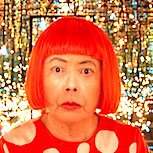
Yayoi Kusama 草間 彌生
1929 CE –
Yayoi Kusama 草間 彌生 (1929 - )
One of the Top 10 Living Artists, 2014’s most popular artist of the year, precursor and inspiration to Andy Warhol and the pop art movement, film writer/start, published novelist and poet named the most popular living artist; almost 90-year-old Yayoi Kusama set a record for a female artist when one of her works sold at Christie’s in New York for $5.1 million. During the counterculture’s 1960s, she organized a series of events that included naked, brightly painted withpolka dots participants. One of the world’s most important voices for the avant-garde, she has lived in a Japanese mental institution since 1973 creating hallucination-inspired “infinity nets” while organizing some of the world’s most popular art exhibitions. After creating art every day for over 70 years, she says she’s feeling “as creative as ever,” that “my mind is full of paintings,” and “I, Kusama, am the modern Alice in Wonderland.”

Yoko Ono 小野 洋子 (“Ocean Child”)
1933 CE –
The daughter of one of Japan’s richest banking clans in a long lineage of samurai warrior scholars; Yoko One fell from attending exclusive schools in New York and Japan to begging for food with all the family possessions in a wheelbarrow. A true, faithful life-artist, she collaborated with John Lennon’s public protests against the Viet Nam war, co-wrote ”Give Peace a Chance” inspired many famous songs, and was the only woman to sing a lead vocal on a Beatles’ recording. Continuing her life as “the world's most famous unknown artist,” she’s extended John Lennon’s legacy of political and social activism, philanthropy, and influence on world culture.
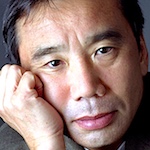
Haruki Murakami
1949 CE –
A “global” writer going beyond his time and culture to explore universal themes, Murakami takes his characters and readers into an inner dreamscape where they together look into the beyond thought world of imagery, perception, and consciousness. Grandson of a Buddhist priest and an Osaka merchant, he became both the most experimental and most popular Japanese novelist translated into English. Called a “voice of his generation,” his books create an allegorical world of magical realism and convey an understanding and appreciation for the vast sacredness of each moment.
Related Sources (1 sources)
Road Back to Nature by Masanobu Fukuoka
Quotes about the Japanese Lineage (7 quotes)
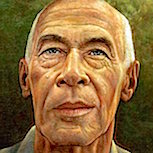
“I've spoken many times about the Japanese woman. I've praised her again and again. But I have to tell you that I think the Japanese man is the worst. The women are such delicate creatures and they're treated abominably by the men. The Japanese men are pigs - even worse than American men.”
Comments: Click to comment

“Had Japan been a tenth as wise as Abraham Lincoln, had Hitler been a hundredth part as sensible, we today, the United States and England, would not have a chance in this war. .. But they have lost because they attacked lands already free, and because they have enslaved peoples accustomed to freedom. By this one thing alone, if by no other, they are doomed. They have misread the hearts and minds of men.”
Comments: Click to comment

“Although the Japanese are familiar with Eastern philosophy and Buddhism, these have become merely a body of concepts to them, they have forgotten the soul of those teachings.”
Comments: Click to comment

“[in America] They plow fields 100 times larger but live a more meager and deprived existence than the Japanese farmer on two or 3 acres... the ultimate cause for this is the meat-based diet of Americans... this has totally unbalanced American land”
Comments: Click to comment
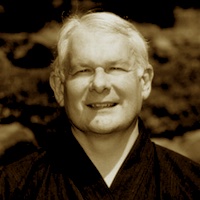
“Buddhism was one of Japan's earliest and most important imports [but] there was one aspect of that doctrine that the Japanese could not embrace: celibacy... In Japan, celibacy never had a chance... Phallicism has always been the norm in Japanese religion.”
Comments: Click to comment
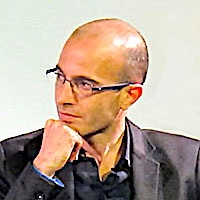
“In the 1930s Japanese generals, admirals, economists and journalists concurred that without control of Korea, Manchuria and the Chinese coast, Japan was doomed to economic stagnation. They were all wrong. In fact, the famed Japanese economic miracle began only after Japan lost all its mainland conquests.”
Comments: Click to comment

“In the 1930's Japanese generals, admirals, economists, and journalists concurred that without control of Korea, Manchuria, and the Chinese coast, Japan was doomed to economic stagnation. They were all wrong. In fact, the famed Japanese economic miracle began only atter Japan lost all of its mainland conquests... It was all just a stupid miscalculation.”
Comments: Click to comment
Comments (0)